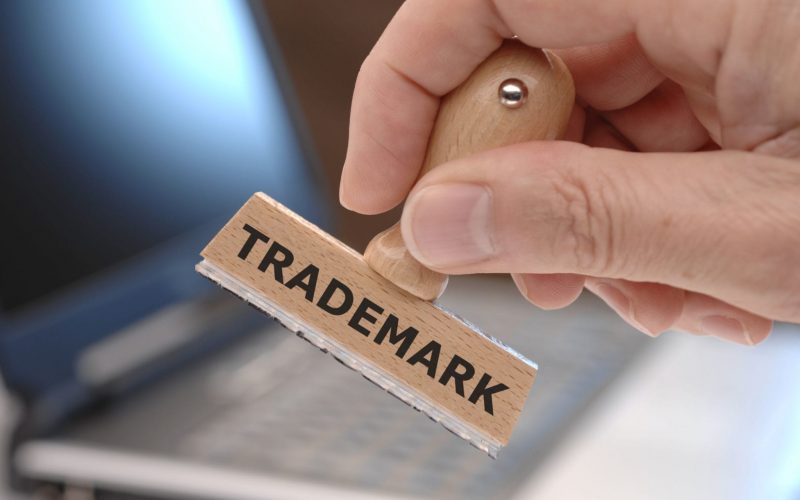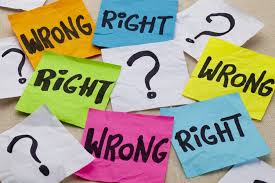When a firm trademarks a phrase, it asserts an exclusive right to the phrase in connection with a certain set of goods or services. Read on to learn how to trademark a phrase or a slogan in the USA, how to copyright a phrase, slogan, or copyright, conduct a trademark phrase search, and know whether you can trademark a phrase.
How to trademark a phrase or slogan in the USA
Phrases or Slogan are all grammatical word devices that, when seen, convey powerful messaging and, ideally, feelings.
Phrases or Slogan turn out, to have legal meanings as well. According to the Trademark Examining Procedure Manual (TMEP),
“A phrase is defined as “a group of words put together in a determined sentence.” ‘two or more words in succession that create a syntactic unit that is less than a complete sentence,’ and ‘two or more words ordered in a grammatical construction and acting as a unit in a sentence.’
How to trademark a Phrase or slogan in the USA: The Basics
- The Registered trademark Phrase cannot be granted by another applicant for a comparable product or service.
- The registered trademark Phrase cannot simply explain the product or service’s nature.
- The Registered trademark Phrase must be used in the context of the sale of goods or services.
How to Trademark a Phrase or Slogan In the USA: A Step-by-Step Guide
#1. Select an Original and Distinctive Phrase or Slogan: How to trademark a phrase or slogan in the USA
It is important that your trademark be adequately distinguishable from the goods/services. That you plan to include in your trademark application. For instance, if you tried to register a trademark for the phrase “Frozen Ice Cream.” But if the prospective goods specified in the trademark registration were actually “Ice Cream,” the mark would be rejected. Why? Because “Generic” descriptions/words for the goods/services provided in the application are ineligible for registration. Rather, choose a phrase that has nothing to do with the products you’re offering. For instance, in this ice cream scenario. An appropriate phrase that would be qualified for registration may be something like, “You’ve never had a larger smile.”
#2. Check your phrase in the USPTO database: How to trademark a phrase or slogan in the USA
After finding that your phrase is fundamentally distinct enough for the goods/services you intend to sell. Then you must now determine that no other marks are currently registered with the USPTO. That would prevent your phrase from being admitted. To do so, you must analyze the similarity of the phrase itself. And the similarity between your future goods/services and the assigned goods/services of the rival.
#3. Determine the Best Filing Basis for the Trademark Application
When filing a trademark application for your term with the USPTO. It is critical to realize that you must specify a “filing basis,” or the grounds on which the registrant has the right to seek protection. Meanwhile, every trademark application must include at least one filing basis, and each filing basis comes with its own set of restrictions.
Free Tips on Trademark (How to trademark a phrase or slogan)
COMMERCIAL USE (Trademark Act Section 1(a)) – If you have already utilized your phrase in relation to the sale of goods/services in Interstate Commerce. Then you may assign the trademark application a Section 1(a) Classification. Again, this must be for legitimate commercial use. Selling a single item to a friend in the same state does not meet the Section 1(a) Classification substantiality criteria.
BASIS OF INTENT-TO-USE (Trademark Act Section 1(b)) – If you have not yet utilized your phrase in relation to the sale of goods in Interstate Commerce. But have a genuine purpose to do so in the future, you may file under a Section 1(b) designation. However, note that within 6 months of submitting the 1(b). That you must either supply a Statement of Use together with a specimen demonstrating that the mark is “In Use” or file a petition for an extension.
FOREIGN REGISTRATION BASE (Trademark Act Section 44(e)) – If you already have a foreign registration from a separate country’s trademark office. you may file for your US trademark application under 44(e) if the mark is the same and the goods/services are the same.
BASE FOR FOREIGN APPLICATION (Trademark Act Section 44(d)) – If you applied for (but did not register) a trademark in another nation within 6 months after filing this current trademark application, you may file under Section 44. (d). Moreover, this is known as a “foreign priority basis” in this context since the applicant is requesting a Priority filing date based on the overseas application instead of the date of filing of the US application.
#4. Choose the Appropriate Goods/Services Class and Description of the Goods/Services
Generally, every good/service is classified by the USPTO into a numbered class system. For instance, if an applicant was in the Apparel industry and intends to sell t-shirts under his new trademark. Then he would submit his registration under CL 025, which covers clothing.
#5. Pay the Required Government Filing Fee: How to trademark a phrase or slogan in the USA
The government filing fees will be $250.00 or $350.00 per class of products. Depending on which application type the trademark applicant chooses. Please consult with your trademark attorney to determine which application type is best for you.
#6. Fill up and submit the Trademark Application
Once you’ve entered all of the administrative and trademark-related information, you’re ready to submit the application. Please double-check your work — even the smallest procedural or substantive error might result in a trademark office action from the USPTO.
How to Copyright a Phrase
Irrespective of your industry or the size of your company, make sure to copyright your phrase. Keep in mind, however, that copyright does not protect phrase.
Steps on how to apply for the copyright of your phrase
Step 1: how to apply for the copyright of your phrase
Fill out the copyright registration form on the online registration website. If your company is based in the United States, you can e-file your copyright application through the official website of the United States Copyright Office. Moreover, you can also send in your application on paper. Applying for your copyright registration online, on the other hand, is not only more convenient for you but also faster. Furthermore, an online application can take up to eight months to be ready, whereas paper forms can take up to 13 months. Whatever method you use to apply for your copyright registration. The date your registration becomes effective is the date the United States Copyright Office receives your application. As a result, if you want to publish your original work, you won’t have to wait for your official certificate.
Step 2: how to apply for the copyright of your phrase
When you arrive at the US Copyright Office website, click the eCO Online Registration icon. This will take you to a Form CO, which you must complete. Moreover, the form will ask for your contact details, as well as the name of the owner and creator, as well as the essence of the copyright documentation. For a logo’s copyright, you must present a graphic representation of your logo.
Step 3: how to apply for the copyright of your phrase
Then, submit your logo file and pay the $35 registration cost using a credit or debit card, electronic check, or your deposit account with the US Copyright Office. You will then receive a copyright registration confirmation with pending status for approval. As previously stated, your copyright will be effective as of the date you submit your application, not the date it is approved.
Slogan Trademark or Copyright: What’s the difference?
Slogan Trademarks and copyright are both kinds of intellectual property. Which can be characterized as intangible resources, or mental creations Like inventions, literary and artistic works, designs, symbols, names, and so on.
However, the major distinction between slogan copyright and trademark is that, while both slogan trademark and copyright provide intellectual property protection. They protect different categories of assets and need different registration procedures.
Generally, copyright protects literary and creative materials and works, like books and videos. And It generates automatically during the creation of the work. A trademark, on the other hand, protects objects that clearly describe a company’s brand, such as a business emblem or phrase, and requires more detailed registration with the government for the best legal protection.
To better comprehend the distinction between slogan trademark and copyright, let’s look at each of these protections individually.
What Copyright Protect
A copyright is a type of intellectual property protection that covers creative works and it generates automatically during their creation.
Copyright safeguards literary, theatrical, musical, and aesthetic works, such as:
Poetry, Novels, Other types of unique writing, Art, Research, Movies, and Songs
Other types of audio and video media
software for computers
Architecture
In brief, the original work is protected under copyright when it is created as long as it is retained in some form. Nevertheless, works that are not accessible in some tangible form—for instance, a speech that was not written down or recorded—can not be copyrighted.
Other works that cannot be copied are:
- Ideas
- Discoveries
- Principles
- Ingredients or content listings (although a recipe or instructions can be copyrighted)
- Calendars and height and weight charts are examples of “common property” works.
How to Protect a Copyright
As we previously stated, in addition to what copyright and trademarks cover, another distinction between the two is how these intellectual properties are secured.
Again, as previously in our explanation, copyright production is automatic when there is a creation of work. However, there are numerous measures you may take to ensure that possible copyright infringers do not utilize your work without permission.
Following are some examples:
#1. Marking Properly
You can ensure that your work is appropriately marked, such as signed or with a watermark, and that there is a clear evolutionary imprint from the work to your firm.
#2. Poor man’s copyright
This is the act of mailing one’s own work to oneself in order to prove that the content has been in one’s custody for a specific period of time. Unfortunately, no such protection is provided in copyright law, and poor man’s copyright is not a replacement for registration.
#3. Creative Commons
Creative Commons provides free copyright licenses that enable you to label your creative work with the liberties you wish it to have.
#4. Use the copyright sign
At the very least, you can use the symbol to indicate protected content.
Steps to Trademark Phrase Search
#1. Describe the goods or services sold under the mark.
The ability to describe your goods will determine whether your trademark application will be accepted or not.
#2. Utilize Acceptable Manuel of Goods and Services: Trademark Phrase Search
Use the online Acceptable Identification of Goods and Services Manual to identify specific terms for your product or service. Start by analyzing this alphabetical list of approved phrases for identifying goods and services. Moreover, the Goods and Services Manual can be on the USPTO’s website Look for phrases that define your product or service.
#3. Determine the International Classification: Trademark Phrase Search
The online Acceptable Identification of Goods and Services Manual entry for your product or service will also include the relevant International Class for that product or service. Although supplying the class for your goods or services is not required for an application (a TEASPlus application is an exception), understanding your international class can help you focus your search.
Determine the terms for related items and services that are utilized, advertised, or sold in conjunction with your product. In the Acceptable Identification of Goods and Services Manual, for example, peanut butter is sold and used with jellies and jams. Scanning the International Classification of Goods and Services for classes linked to your product or service is also a good idea.
#5. Create a Fundamental Search Strategy: Trademark Phrase Search
If your initial pick is already taken, come up with a few alternatives. Is there any reason why the USPTO might reject your trademark? What are the most crucial keywords in your mark if it includes a phrase? Remember to hunt for marks with word stems that are comparable to yours by using truncation devices (*) or wildcards (?).
#6. Extend Your Search Strategy: Trademark Phrase Search
Consider looking for your mark using different spellings and homonyms. Use words with the same or comparable meanings to your target. Moreover, attempt words with similar sounds or appearances, as well as phonetic counterparts. If necessary, you can refine the strategy later by reducing your search results to the goods/services you discovered in Step 2 or the International Class you discovered in Step 3.
#7. Carry out the Search TESS (Trademark Electronic Search System)
The USPTO’s web-based Trademark Electronic Search System—can be accessed at your area Patent and Trademark Resource Center or from home if you have Internet access.
Can a Word or Phrase Be Trademark?
Any word, phrase, symbol, design, or combination of these that distinguishes your products or services might be considered a trademark. Customers use it to recognize you in the marketplace and set you apart from your rivals. Both trademarks and service marks can be referred to by the term “trademark.”
Is It Better to Copyright or Trademark a Slogan?
A slogan becomes a trademark when it is used to designate the source or provider of specific products or services. A slogan is never protected by copyright. Creative works are legally protected by copyright. A slogan wouldn’t qualify for copyright protection because it is typically brief and unoriginal.
Do I Need Legal Counsel to Register a Phrase?
It’s not necessary to hire a lawyer for the trademark registration process, but doing so can guarantee that you get the protection you need without spending more time or money than necessary. Almost always, the answer to the question of whether you even need a trademark is yes.
Can Someone Trademark My Phrase?
Yes, that is the answer. A trademark is simply a sign that is used to identify particular goods or services. A “sign” can be any letter, word, name, signature, number, device, brand, heading, label, or component of packaging, as well as any color, sound, form, or smell.
How Do I Trademark a Phrase for Free?
Common law trademarks can be registered at no cost and without filling out any paperwork. Because you will always have to pay at least a minor charge to cover the costs of processing and analyzing your trademark registration, there is no way to register a name trademark for free. There is no free federal trademark available.
What Happens if You Use a Phrase That Is Protected by a Trademark?
Trademark infringement is not a criminal offense and is instead pursued under civil rules. Instead, you will typically be ordered to stop using the brand as a result of a trademark infringement case, and you might also be required to repay any profits you received from the infringing use or pay monetary damages for using the trademark.
What Cannot Be Trademarked in the USA?
Trademarks cannot be used to protect original works of art or inventions; they are protected by copyrights and patents, respectively. Additionally, some brand components are ineligible for trademark protection since they do not specify where a good or service comes from. It is not possible to trademark names or logos that are too close to already-existing trademarks.
Conclusion
This article clearly states how to trademark a phrase or slogan.
How to trademark a phrase FAQ’s
How much does it cost to trademark a phrase?
If you have ever asked yourself how much does it cost to trademark a phrase, according to the current fee schedule on the USPTO, trademark registration fees cost $275 per mark per class. If you need an attorney’s assistance, the cost averages around $1,000 to $2,000.
Can you copyright a phrase or saying?
Copyright does not protect names, titles, slogans, or short phrases. In some cases, these things may be protected as trademarks.
Can you trademark a phrase on a T-shirt?
If your T-shirt design has symbols, words, or other marks that uniquely distinguish it from other T-shirts on the market you can obtain a trademark to protect your design from others who might wish to capitalize on your intellectual property.
- TO WHOM IT MAY CONCERN: All You Should Know!!!
- How To Trademark a Name: Importance, Tips & All You Need
- REALTOR TRADEMARK: Best Practices, Rules & All You Need
- HOW TO TRADEMARK A LOGO: Best US practices, Requirements & What you should know
- Intangible Property: What Is Intangible Property (+ Practical Examples)
- TRADEMARK LAWYER: How to Hire a Licensed Trademark Attorney






